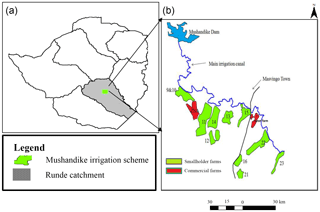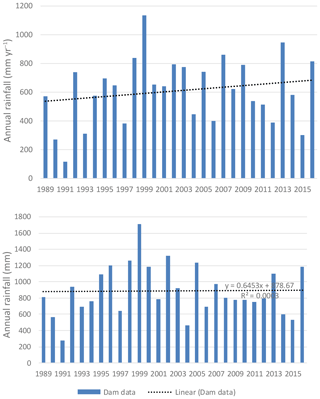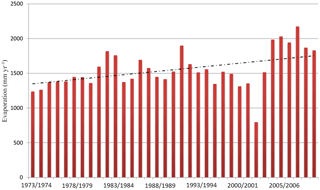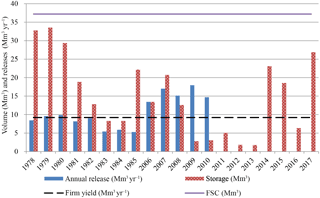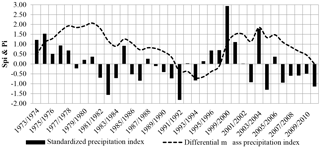Water management challenges at Mushandike irrigation scheme in Runde catchment, Zimbabwe
Mushandike Irrigation Scheme, constructed in 1939, is located in Masvingo District and is one of the oldest irrigation schemes in Zimbabwe. Since 2002, the scheme has experienced severe water shortages resulting in poor crop yields. The low crop yields have led to loss of income to the smallholder farmers who constitute the irrigation scheme leading to water conflicts. The water stress at the scheme has been largely attributed to climate change and the uncontrolled expansion of the land under irrigation which is currently about 1000 ha against a design area of 613 ha. This study sought to determine the actual causes of water shortage at Mushandike Irrigation Scheme. Hydro-climatic data was analysed to establish if the Mushandike River system generates enough water to guarantee the calculated annual yield of the dam. Irrigation demands and efficiencies were compared against water availability and dam releases to establish if there is any deficit. The Spearman's Rank Correlation results of 0.196 for rainfall and 0.48 for evaporation confirmed positive but insignificant long-term changes in hydro-climatic conditions in the catchment. Water budgets established that the yield of the dam of 9.2 × 106 m3 year−1 is sufficient to support the expanded area of 1000 ha provided in-field water management efficiencies are adopted. The study concludes that water shortages currently experienced at the scheme are a result of inefficient water management (e.g. over-abstraction from the dam beyond the firm yield, adoption of inefficient irrigation methods and high channel losses in the canal system) and are not related to hydro-climatic conditions. The study also sees no value in considering inter-basin water transfer to cushion the losses being experienced at the scheme.






